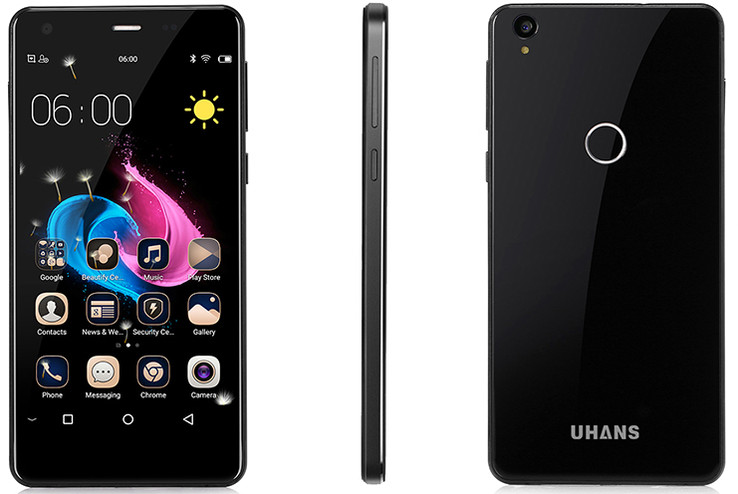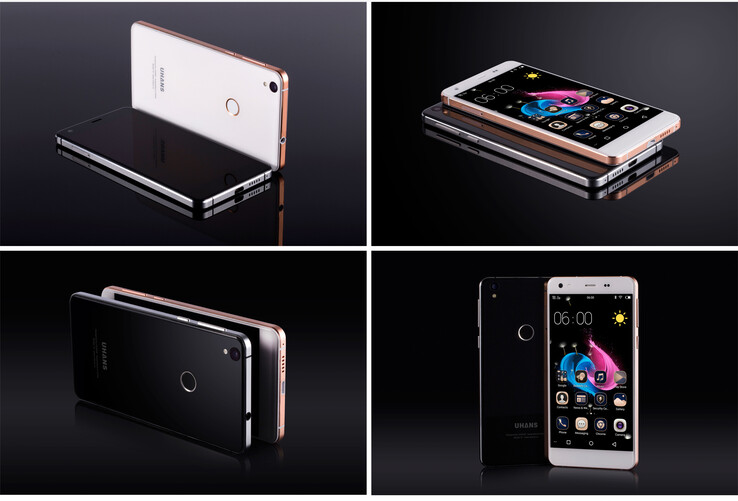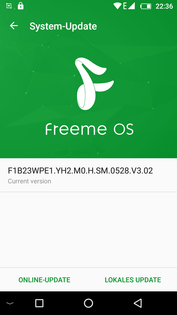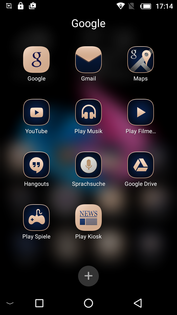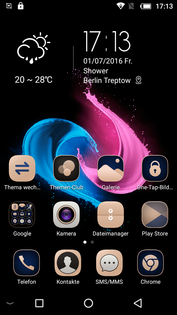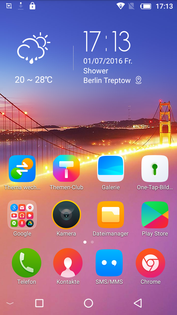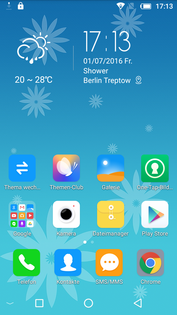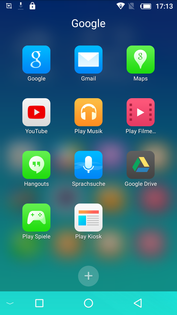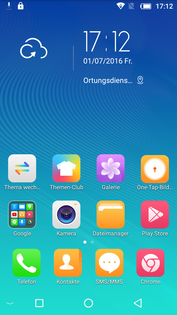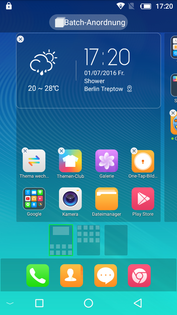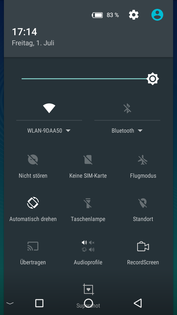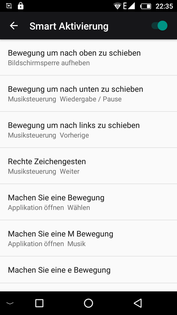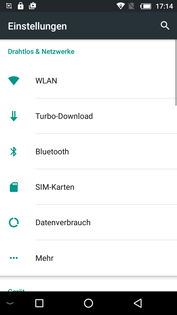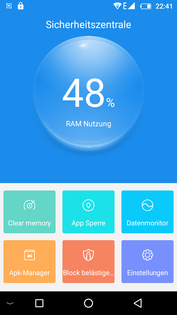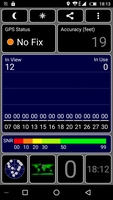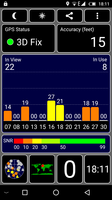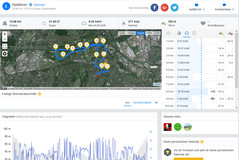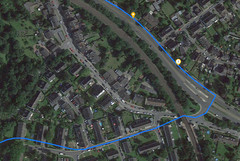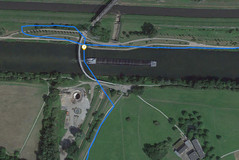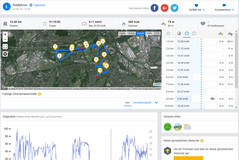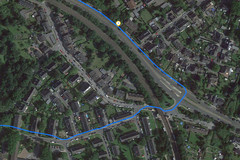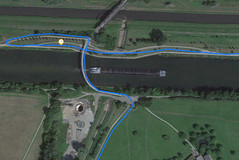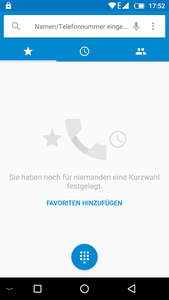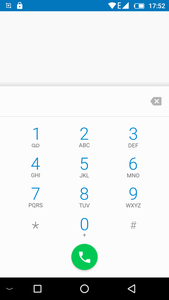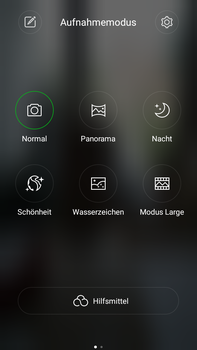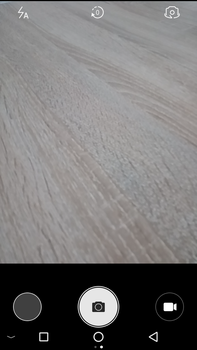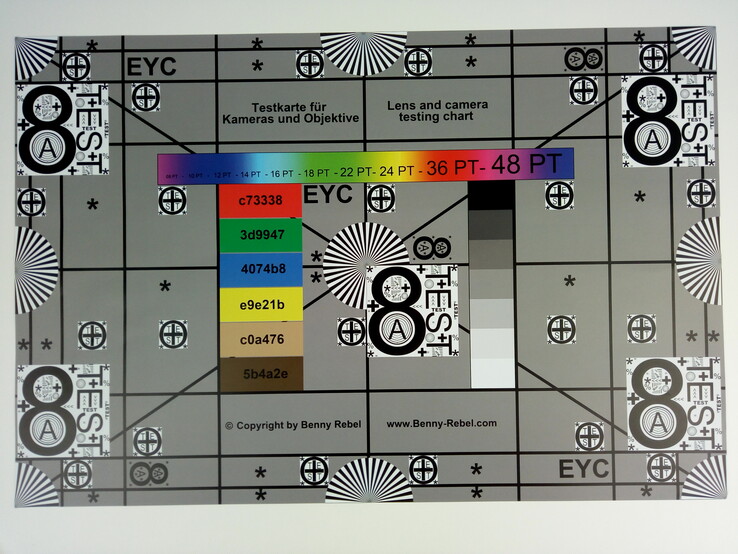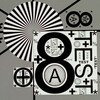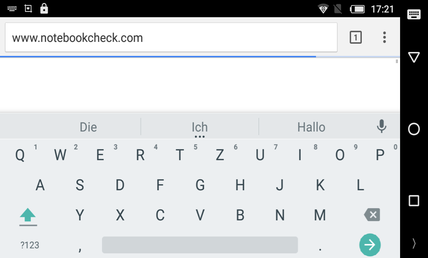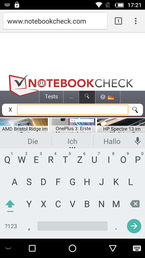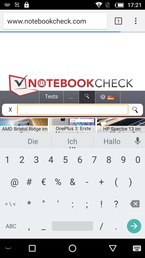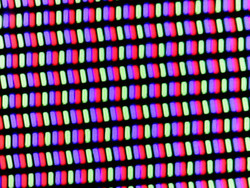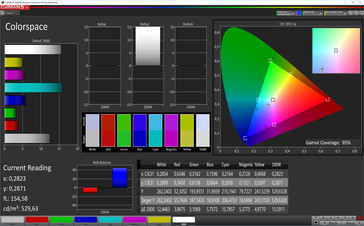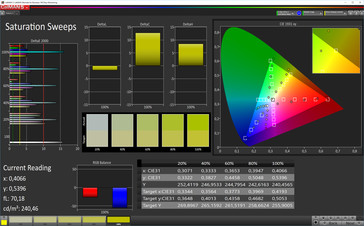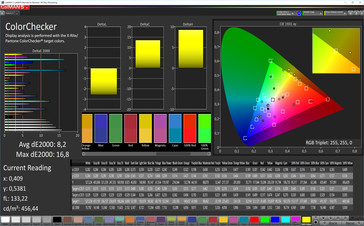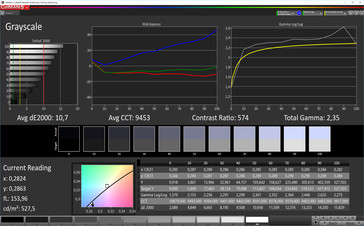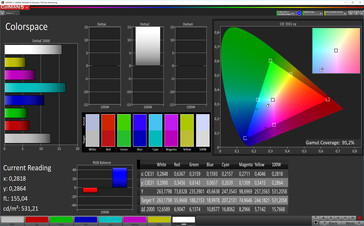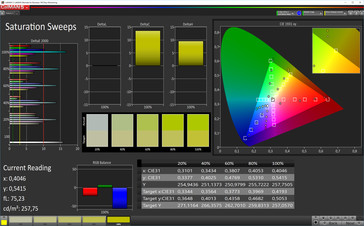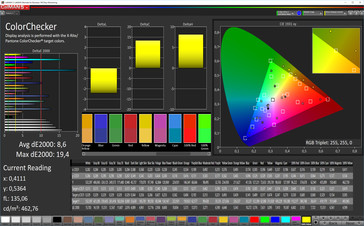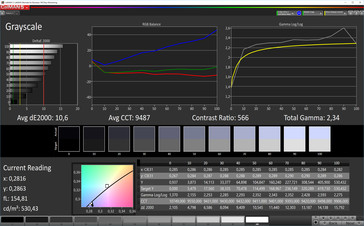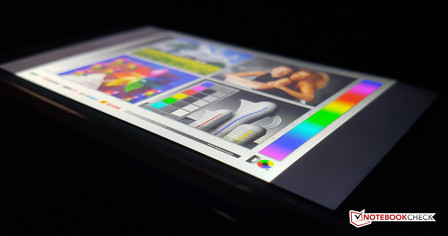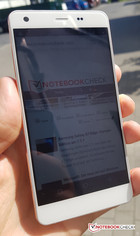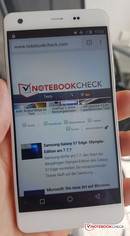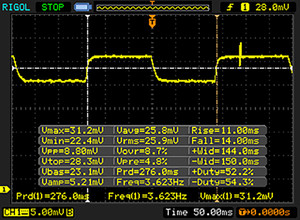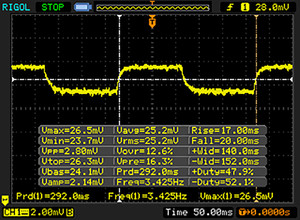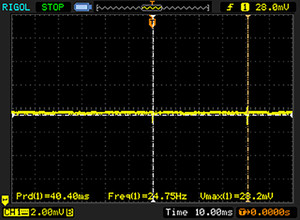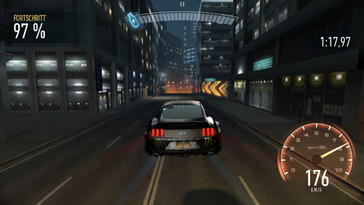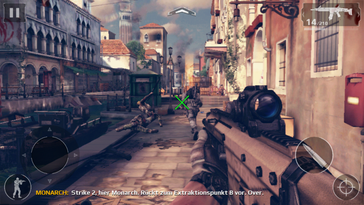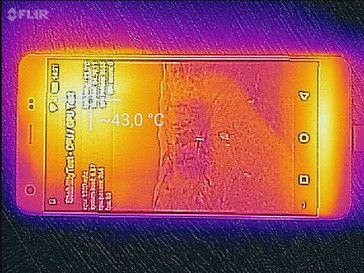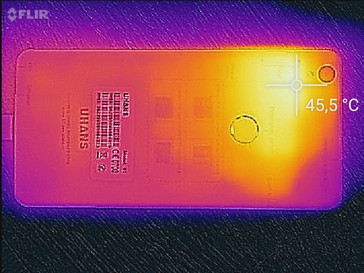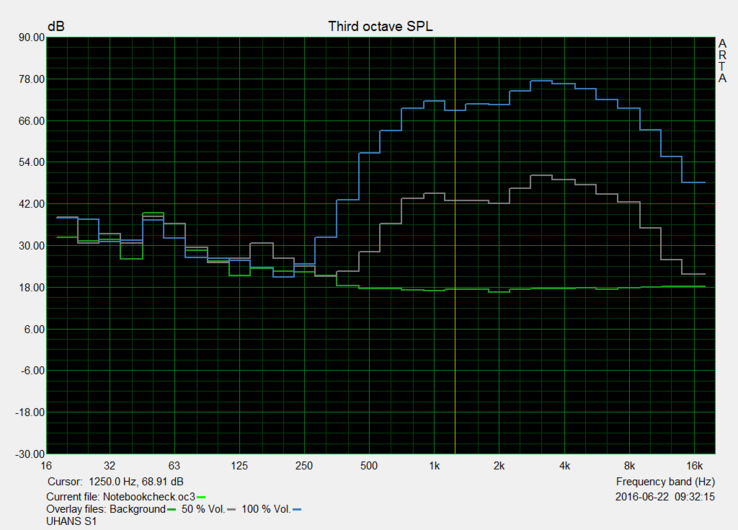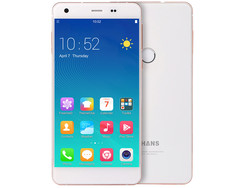UHANS S1 Smartphone Review
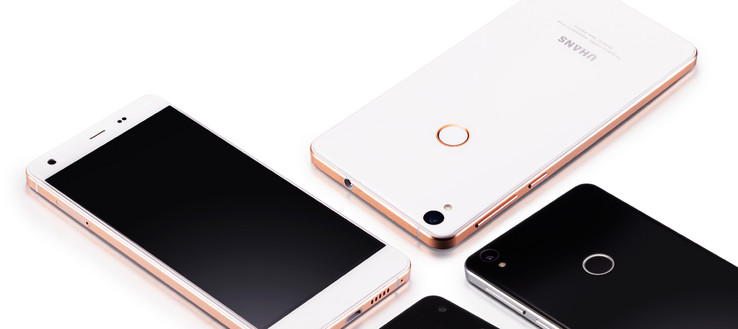
For the original German review, see here.
With the first generation of the S series, the manufacturer UHANS, still relatively unknown in Germany, expands its product portfolio by another model: S1. The "S" in the name of the model series stands for the attributes: Slim and sleek. Thus, it is not surprising that the 5-inch LTE smartphone is very thin at a height of just 7.3 millimeters.
An octa-core SoC by MediaTek is installed in the entry-level handset. The memory is very generous for a device from this price range with 3 GB of RAM and 32 GB of ROM. A micro-SD slot is also present. The hybrid slot in UHANS' S1 can alternatively be fitted with two micro-SIM cards. The camera modules have a native resolution of 5 and 13.3 MP, and the IPS panel has a resolution of 1280 x 720 pixels.
Since UHANS does not sell its devices directly on the German market, the S1 is only sold via import companies. The entry-level handset is available in black-gray and white-gold. Present rivals of the approximately 130 Euro dual-SIM smartphone are found among Android devices consisting of UMi's Touch, Coolpad's Porto S, Oukitel's K4000 Pro, Archos' 50 Power und LG's K4, but also Microsoft's latest entry-level handset Lumia 550.
Case
Both the front and rear of UHANS' S1 is made of scratch-resistant glass that is integrated into a lightly curved 2.5D bezel. This gives the entry-level handset a nice feel and quality that is normally only found in considerably higher priced smartphones. The smartphone is relatively slippery due to its glass back. Furthermore, fingerprints soon cover the device - although that was kept within limits on our tested white model. The lightly beveled metal bezel on the edges contributes to the stability of UHANS' S1. It also gives the entry-level handset a block-like feel like that of Apple's iPhone SE.
The frame around the IPS panel is comparatively narrow. The dimensions of 140 x 69.1 millimeters alongside a screen diagonal of 5 inches equal a screen-surface ratio of good 71.2 percent. Thus, it is on par with UMi's Touch (71 %). The 13-megapixel primary camera situated in the upper back does not jut out of the slim 7.3-millimeter casing.
The build quality and choice of materials for UHANS' S1 is the highest standard for the price range. The buttons for volume control and power on the casing's right also have a well-defined pressure point. The casing's stiffness makes a just as decent impression - nothing creaks or cracks when holding the handset.
Connectivity
The internal eMMC storage of 32 GB, which can be expanded by up to 64 GB via a micro-SD card, is very generous for an entry-level handset. By comparison, LG's K4 with 8 GB only has a quarter of the ROM capacity of UHANS's S1. The user has roughly 24.82 GB for personal use after deducting the operating system. The manufacturer supports moving compatible apps to the SD card (App2SD).
The smartphone is recharged via the micro-USB 2.0 port on the handset's lower edge. It also supports USB OTG (on-the-go) for connecting external storage devices or peripherals. The smartphone also features an FM radio, notification LED, and fingerprint scanner. Furthermore, wireless transmission of display content to external monitors functioned well in the test with a Sony Android TV.
Software
The preloaded Freeme OS 6.1 operating system in UHANS' S1 is based on the latest version of Google's Android 6.0 Marshmallow platform. Although the custom ROM keeps fundamental Android structures, some visual and functional modifications have been made to the Freeme OS user interface. For example, installed applications are distributed over the home screen like known from Apple products. The user can individually adapt the design via the company's Theme Store, and easily swap it from the home screen via applications.
Despite selecting German for system language, English was used in some places.
Communication & GPS
The WiFi module installed in UHANS' S1 only supports the IEEE 802.11 b/g/n standards as known from entry-level handsets. The reception performance was good in routine use, and the WiFi signal was stable. The attenuation of just below -50 dBm was comparatively high directly beside the router (Telekom Speedport, W921V). However, the signal was strong enough in a neighboring room (-64 dBm). UHANS' smartphone sports Bluetooth version 4.0 for wireless communication between mobile end devices. The average transmission rates to the router (Linksys EA8500) at a meter distance of 50.9 Mbit/s (transmit) and 30.5 Mbit/s (receive) are on a standard level for entry-level devices. By comparison: Current premium range smartphones, such as Huawei's P9, achieve rates of 205 Mbit/s and 249 Mbit/s.
The dual-SIM smartphone can access mobile Internet with up to two micro-SIM cards. The "main" slot supports quad-band GSM, tri-band UMTS and LTE Cat.4 in the 800, 900, 1800, 2100, and 2600 MHz frequencies. This also includes the LTE band 20 that is important in German rural areas and which is often absent in imported devices. The hybrid slot is limited to UMTS connections.
The GPS module in UHANS' S1 quickly and reliably finds the actual position with an accuracy of 4.5 meters outdoors. However, localization was not successful indoors in the test. In our practical test, where a route is recorded using both the GPS module in the entry-level smartphone and Garmin's Edge 500 bike computer, UHANS' S1 displays some deviations in the route - the accuracy of the smartphone's GPS is average in total.
Telephone & Call Quality
UHANS relies on Google's stock phone app for its S1 model. It offers common features, such as favorites, call list, integrated phone book, and search.
Sound and voice quality of the earpiece are very satisfactory. The contact is also understood well thanks to its maximum volume. We performed test calls using both Skype and the German O2 mobile network (E network).
Cameras
The rear-facing primary camera features a Sony Exmor RS sensor with a resolution of 13.3 MP in a 4:3 format (4096 x 3072 pixels). The Japanese manufacturer uses its IMX214 CMOS image sensor in its Xperia Z2 model. The maximum pixel count is interpolated to 15.9 via software in UHANS' S1.
The camera module achieves high-detail photos with good image sharpness that, however, decreases toward the edges in bright light conditions. The colors in the photos also look natural and do not exhibit any significant color tints. The aperture of f/2.2, i.e. the ratio of focal length to diameter, allows the lens to capture plenty of light, but the photos tend to look dark (scene 2: woods). Phase detection autofocus enables changing the object quickly and accurately. UHANS' S1 does a relatively poor job in low-light scenarios (scene 3: street) - hardly any details are visible here.
The front-facing camera's image sensor has a native resolution of 5 MP, which is interpolated to 8 megapixels also via software. The quality is quite sufficient for selfies. Videos can be recorded with up to 1080p at 30 FPS. The recording quality drops to 480p at 30 FPS when using the 5 MP camera.
Accessories & Warranty
The box contains a quick start guide, a modular power supply, and a USB charging cable besides the review sample. Beyond that, UHANS includes a transparent protective cover and a screen protector for the S1. A headset is not included.
UHANS includes a global warranty period of 24 months on its smartphone.
Input Devices & Handling
The multi-touchscreen responds very accurately to inputs, and the glass surface offers pleasant gliding traits. The active fingerprint scanner on the smartphone's back is well positioned and unlocking the device via biometric identification with a fingerprint functions reliably. However, the sensor is not the fastest one on the market.
UHANS' S1 is furnished with Google's stock keyboard in Android Marshmallow design for onscreen inputting.
Display
The IPS LC display in UHANS' S1 has a diagonal of 12.7 centimeters (5 inches). In conjunction with a resolution of 1280 x 720 pixels, this results in a pixel density of 294 PPI. Thus, the pixel density of UHANS' S1 is below the magic Apple Retina limit of 300 PPI, but even small fonts in text contents still look sharp and pixel structures are hardly visible from a normal viewing distance.
The LED backlight of UHANS' S1 can be very bright and achieves a rate of up to 525 cd/m² in the screen's center. However, it only reaches an average brightness of 471 cd/m² since the panel's illumination of 82 percent is heterogeneous compared with other devices. The realistic APL50 test (average picture level) with evenly distributed bright and dark areas reveals a similar maximum brightness of 533 cd/m².
| |||||||||||||||||||||||||
Brightness Distribution: 82 %
Center on Battery: 525 cd/m²
Contrast: 571:1 (Black: 0.92 cd/m²)
ΔE ColorChecker Calman: 8.6 | ∀{0.5-29.43 Ø4.77}
ΔE Greyscale Calman: 10.6 | ∀{0.09-98 Ø5}
Gamma: 2.34
CCT: 9487 K
| UHANS S1 IPS, 1280x720, 5" | UMI Touch IPS, 1920x1080, 5.5" | Microsoft Lumia 550 IPS, 1280x720, 4.7" | Coolpad Porto S IPS, 1280x720, 5" | LG K4 TN-TFT, 854x480, 4.5" | Oukitel K4000 Pro IPS, 1280x720, 5" | Archos 50 Power IPS, 1280x720, 5" | Huawei P9 IPS-NEO, JDI, 1920x1080, 5.2" | |
|---|---|---|---|---|---|---|---|---|
| Screen | 20% | 27% | 12% | -2% | 18% | 22% | 54% | |
| Brightness middle (cd/m²) | 525 | 424 -19% | 536 2% | 407 -22% | 337 -36% | 360 -31% | 304 -42% | 582 11% |
| Brightness (cd/m²) | 471 | 415 -12% | 535 14% | 403 -14% | 342 -27% | 367 -22% | 311 -34% | 563 20% |
| Brightness Distribution (%) | 82 | 91 11% | 95 16% | 92 12% | 92 12% | 89 9% | 83 1% | 91 11% |
| Black Level * (cd/m²) | 0.92 | 0.54 41% | 0.62 33% | 0.5 46% | 0.44 52% | 0.36 61% | 0.31 66% | 0.38 59% |
| Contrast (:1) | 571 | 785 37% | 865 51% | 814 43% | 766 34% | 1000 75% | 981 72% | 1532 168% |
| Colorchecker dE 2000 * | 8.6 | 6.9 20% | 5.81 32% | 7.9 8% | 11.4 -33% | 9.01 -5% | 5.9 31% | 4.4 49% |
| Colorchecker dE 2000 max. * | 19.4 | 10.9 44% | 12.3 37% | 18.2 6% | 22 -13% | 12.58 35% | 14.3 26% | 7.4 62% |
| Greyscale dE 2000 * | 10.6 | 6.8 36% | 7.72 27% | 8.9 16% | 11 -4% | 8.67 18% | 4.6 57% | 4.8 55% |
| Gamma | 2.34 94% | 1.99 111% | 2.18 101% | 2.46 89% | 2.19 100% | 2.66 83% | 2.51 88% | 2.2 100% |
| CCT | 9487 69% | 8131 80% | 8701 75% | 8332 78% | 9372 69% | 7641 85% | 7088 92% | 6175 105% |
| Color Space (Percent of AdobeRGB 1998) (%) | 77.78 | |||||||
| Color Space (Percent of sRGB) (%) | 99.44 |
* ... smaller is better
The interaction of screen brightness and black level of 0.92 cd/m² result in a contrast of 571:1. The realistic APL50 test does not disclose a better black level (0.93 cd/m²), either. The analysis using a photospectrometer and CalMAN software shows some clear shifts in color (8.6) and grayscale (10.6) reproduction. Furthermore, the measured color temperature of 9487 Kelvin is too cool - however, that does not lead to a visible bluish tint in practice although the grayscale levels indicate this.
The color reproduction can be customized in the settings menu via the display modes standard and vivid.
The smartphone looks very good outdoors in bright ambient light thanks to its bright screen and always remains legible. The handset can even cope with direct sunlight without losing contents due to reflections. Thanks to the IPS technology, the liquid crystal display in UHANS' S1 has very stable viewing angles. Color aberrations are not an issue even at extreme viewing angles. The common IPS glow effect, i.e. dark areas are brightened fully in very flat viewing angles, is visible but not particularly prominent.
Display Response Times
| ↔ Response Time Black to White | ||
|---|---|---|
| 25 ms ... rise ↗ and fall ↘ combined | ↗ 11 ms rise | |
| ↘ 14 ms fall | ||
| The screen shows relatively slow response rates in our tests and may be too slow for gamers. In comparison, all tested devices range from 0.1 (minimum) to 240 (maximum) ms. » 58 % of all devices are better. This means that the measured response time is worse than the average of all tested devices (20.2 ms). | ||
| ↔ Response Time 50% Grey to 80% Grey | ||
| 37 ms ... rise ↗ and fall ↘ combined | ↗ 17 ms rise | |
| ↘ 20 ms fall | ||
| The screen shows slow response rates in our tests and will be unsatisfactory for gamers. In comparison, all tested devices range from 0.165 (minimum) to 636 (maximum) ms. » 52 % of all devices are better. This means that the measured response time is worse than the average of all tested devices (31.6 ms). | ||
Screen Flickering / PWM (Pulse-Width Modulation)
| Screen flickering / PWM not detected | |||
In comparison: 53 % of all tested devices do not use PWM to dim the display. If PWM was detected, an average of 8081 (minimum: 5 - maximum: 343500) Hz was measured. | |||
Performance
MediaTek's MT installed in UHANS' S1 is an ARM SoC (system on a chip) that clocks at a frequency of 1.3 GHz. The mid-range processor has eight CPU cores based on the 64-bit capable Cortex A53 architecture. An ARM Mali-T720 MP4 and 3 GB of DDR2 RAM support the CPU.
The performance ensures a smoothly running system in routine use. Lags or stutters only appear in multitasking as well as in conjunction with high waste heat after intensive use. UHANS S1 has an edge on the rivals in the benchmarks and browser performance - solely UMi's Touch can keep up. The subjective performance impression is also above average - apps open and close very quickly. That is primarily owed to the fast internal storage that is on par with our Huawei's P9 test reference.
The performance of the integrated micro-SD card slot is also very satisfactory for the price range. We tested its speed with our Toshiba Exceria Pro M401 reference memory card (max. read: 95 MB/s, write 80 MB/s). The access rates of UHANS' handset are higher than that of the comparison devices with 48.15 MB/s (read) and 20.17 MB/s (write).
| AndroBench 3-5 | |
| Sequential Write 256KB (sort by value) | |
| UHANS S1 | |
| UMI Touch | |
| Coolpad Porto S | |
| LG K4 | |
| Oukitel K4000 Pro | |
| Archos 50 Power | |
| Huawei P9 | |
| Sequential Read 256KB (sort by value) | |
| UHANS S1 | |
| UMI Touch | |
| Coolpad Porto S | |
| LG K4 | |
| Oukitel K4000 Pro | |
| Archos 50 Power | |
| Huawei P9 | |
| Random Write 4KB (sort by value) | |
| UHANS S1 | |
| UMI Touch | |
| Coolpad Porto S | |
| LG K4 | |
| Oukitel K4000 Pro | |
| Archos 50 Power | |
| Huawei P9 | |
| Random Read 4KB (sort by value) | |
| UHANS S1 | |
| UMI Touch | |
| Coolpad Porto S | |
| LG K4 | |
| Oukitel K4000 Pro | |
| Archos 50 Power | |
| Huawei P9 | |
| Sequential Write 256KB SDCard (sort by value) | |
| UHANS S1 | |
| UMI Touch | |
| LG K4 | |
| Archos 50 Power | |
| Huawei P9 | |
| Sequential Read 256KB SDCard (sort by value) | |
| UHANS S1 | |
| UMI Touch | |
| LG K4 | |
| Archos 50 Power | |
| Huawei P9 | |
| AnTuTu v6 - Total Score (sort by value) | |
| UHANS S1 | |
| UMI Touch | |
| Microsoft Lumia 550 | |
| Coolpad Porto S | |
| LG K4 | |
| Oukitel K4000 Pro | |
| Archos 50 Power | |
| Huawei P9 | |
| Geekbench 3 | |
| 64 Bit Single-Core Score (sort by value) | |
| UHANS S1 | |
| UMI Touch | |
| Archos 50 Power | |
| Huawei P9 | |
| 64 Bit Multi-Core Score (sort by value) | |
| UHANS S1 | |
| UMI Touch | |
| Archos 50 Power | |
| Huawei P9 | |
| 3DMark | |
| 1280x720 offscreen Ice Storm Unlimited Score (sort by value) | |
| UHANS S1 | |
| UMI Touch | |
| Coolpad Porto S | |
| LG K4 | |
| Oukitel K4000 Pro | |
| Archos 50 Power | |
| Huawei P9 | |
| 1280x720 offscreen Ice Storm Unlimited Graphics Score (sort by value) | |
| UHANS S1 | |
| UMI Touch | |
| Coolpad Porto S | |
| LG K4 | |
| Oukitel K4000 Pro | |
| Archos 50 Power | |
| Huawei P9 | |
| 1280x720 offscreen Ice Storm Unlimited Physics (sort by value) | |
| UHANS S1 | |
| UMI Touch | |
| Coolpad Porto S | |
| LG K4 | |
| Oukitel K4000 Pro | |
| Archos 50 Power | |
| Huawei P9 | |
| 2560x1440 Sling Shot OpenGL ES 3.0 (sort by value) | |
| UHANS S1 | |
| UMI Touch | |
| Oukitel K4000 Pro | |
| Archos 50 Power | |
| Huawei P9 | |
| 2560x1440 Sling Shot OpenGL ES 3.0 Graphics (sort by value) | |
| UHANS S1 | |
| UMI Touch | |
| Oukitel K4000 Pro | |
| Huawei P9 | |
| 2560x1440 Sling Shot OpenGL ES 3.0 Physics (sort by value) | |
| UHANS S1 | |
| UMI Touch | |
| Oukitel K4000 Pro | |
| Huawei P9 | |
| PCMark for Android - Work performance score (sort by value) | |
| UHANS S1 | |
| UMI Touch | |
| Coolpad Porto S | |
| LG K4 | |
| Oukitel K4000 Pro | |
| Archos 50 Power | |
| Huawei P9 | |
| Mozilla Kraken 1.1 - Total (sort by value) | |
| UHANS S1 | |
| UMI Touch | |
| Microsoft Lumia 550 | |
| Coolpad Porto S | |
| LG K4 | |
| Oukitel K4000 Pro | |
| Archos 50 Power | |
| Huawei P9 | |
| JetStream 1.1 - Total Score (sort by value) | |
| UHANS S1 | |
| UMI Touch | |
| Microsoft Lumia 550 | |
| Coolpad Porto S | |
| LG K4 | |
| Oukitel K4000 Pro | |
| Archos 50 Power | |
| Huawei P9 | |
| Octane V2 - Total Score (sort by value) | |
| UHANS S1 | |
| UMI Touch | |
| Microsoft Lumia 550 | |
| Coolpad Porto S | |
| LG K4 | |
| Oukitel K4000 Pro | |
| Archos 50 Power | |
| Huawei P9 | |
* ... smaller is better
Games
The Mali-T720 MP4 graphics unit in UHANS' S1 barely has problems with up-to-date Android games like "Need for Speed No Limits" and "Modern Combat 5". However, the handset gets very warm after prolonged gaming use, and the performance drops noticeably.
Emissions
Temperature
UHANS' S1 already heats up evidently when idling with maximum idle temperatures of good 37.8 °C. The temperature development increases even more during load. We measured a maximum of 44.6 °C in the test. When looking at the average temperatures of UHANS' S1, a prominent waste heat is obvious compared to the opponents that will be noticed unfavorably especially during computing-intensive applications.
(±) The maximum temperature on the upper side is 44.6 °C / 112 F, compared to the average of 35.2 °C / 95 F, ranging from 21.9 to 247 °C for the class Smartphone.
(±) The bottom heats up to a maximum of 43.2 °C / 110 F, compared to the average of 34 °C / 93 F
(±) In idle usage, the average temperature for the upper side is 36.1 °C / 97 F, compared to the device average of 32.9 °C / 91 F.
Speaker
The mono speaker on the casing's lower edge achieves a maximum volume of 84 dB(A). Thus, the UHANS' S1 volume is still satisfactory for everyday use, but the sound quality is not. The sound is concentrated in the medium and high tones of 1 to 8 kHz. Overall, the sound impression lacks low tones below 500 Hz. Furthermore, audio playback sounds very tinny.
The 3.5 mm jack can be used for a better music playback quality. However, users will need their own headphones as none are included.
Energy Management
Power Consumption
UHANS' S1 manages its energy well in idle mode. The idle power consumption of averagely 1.13 watts is clearly lower than that of the comparison devices. However, the load power consumption could be a bit lower considering the energy requirements of the 5-inch rivals.
| Off / Standby | |
| Idle | |
| Load |
|
Key:
min: | |
| UHANS S1 2200 mAh | UMI Touch 4000 mAh | Microsoft Lumia 550 2100 mAh | Coolpad Porto S 2000 mAh | LG K4 1940 mAh | Oukitel K4000 Pro 4600 mAh | Archos 50 Power 4000 mAh | Huawei P9 3000 mAh | |
|---|---|---|---|---|---|---|---|---|
| Power Consumption | -33% | -44% | -38% | -17% | -154% | -88% | -36% | |
| Idle Minimum * (Watt) | 0.7 | 0.89 -27% | 0.55 21% | 1.16 -66% | 1.15 -64% | 2.74 -291% | 1.66 -137% | 0.77 -10% |
| Idle Average * (Watt) | 1.13 | 2 -77% | 2.69 -138% | 2.21 -96% | 1.76 -56% | 3.92 -247% | 2.88 -155% | 2.36 -109% |
| Idle Maximum * (Watt) | 1.25 | 2.1 -68% | 2.93 -134% | 2.24 -79% | 1.82 -46% | 4.05 -224% | 3.46 -177% | 2.37 -90% |
| Load Average * (Watt) | 4.39 | 3.87 12% | 3.94 10% | 3.34 24% | 2.71 38% | 4.84 -10% | 3.96 10% | 3.09 30% |
| Load Maximum * (Watt) | 5.43 | 5.79 -7% | 4.24 22% | 3.95 27% | 3.15 42% | 5.42 -0% | 4.34 20% | 5.35 1% |
* ... smaller is better
Battery Runtime
The battery in UHANS' S1 is built by the Chinese lithium ion battery manufacturer BAK. The nominal output of 2200 mAh is a bit tight even for a 5-inch smartphone with comparatively high power consumption during load. The runtime of 5 hours and 9 minutes are correspondingly short in our WiFi test. Rivals like Oukitel's K4000 Pro are considerably longer lasting. However, a day with UHANS' S1 should be possible with moderate use.
| UHANS S1 2200 mAh | UMI Touch 4000 mAh | Microsoft Lumia 550 2100 mAh | Coolpad Porto S 2000 mAh | LG K4 1940 mAh | Oukitel K4000 Pro 4600 mAh | Archos 50 Power 4000 mAh | |
|---|---|---|---|---|---|---|---|
| Battery runtime | |||||||
| WiFi v1.3 (h) | 5.2 | 9.2 77% | 7.4 42% | 8.4 62% | 7.5 44% | 11.9 129% | 9.9 90% |
Pros
Cons
Verdict
The first generation of the S series from the Chinese smartphone label UHANS impresses with a very good total package in our test. At a street price of roughly 125 Euros (at test time), the entry-level offers features normally only found in the mid-range in form of 32 GB of internal storage, a well-functioning fingerprints scanner, 3 GB of RAM, and a quality casing made of metal and glass. The same is true for the handset's performance - the subjective operating speed is outstanding for the price range.
However, we also have a few points of criticism: The screen in UHANS' S1 is bright but also relatively unevenly illuminated. Furthermore, the black level, contrast, and IPS panel's color calibration are not completely convincing although the screen's quality is satisfactory for routine use. The sound impression of the installed speakers is also tinny. The biggest drawback of the S1 is, however, its temperature development - UHANS' handset is not suitable for prolonged gaming sessions, also because the battery life would not allow this. The waste heat is kept within limits in daily use (browsing, social media, calls).
Buyers will not do much wrong with UHANS' S1 - the entry-level handset has a very low purchase price for the offered performance. Nevertheless, we cannot give the smartphone an unconditional purchase recommendation due to temperature development and limited battery life. Perhaps UHANS will make improvements here via software updates.
UHANS S1
- 07/06/2016 v5.1 (old)
Marcus Herbrich


